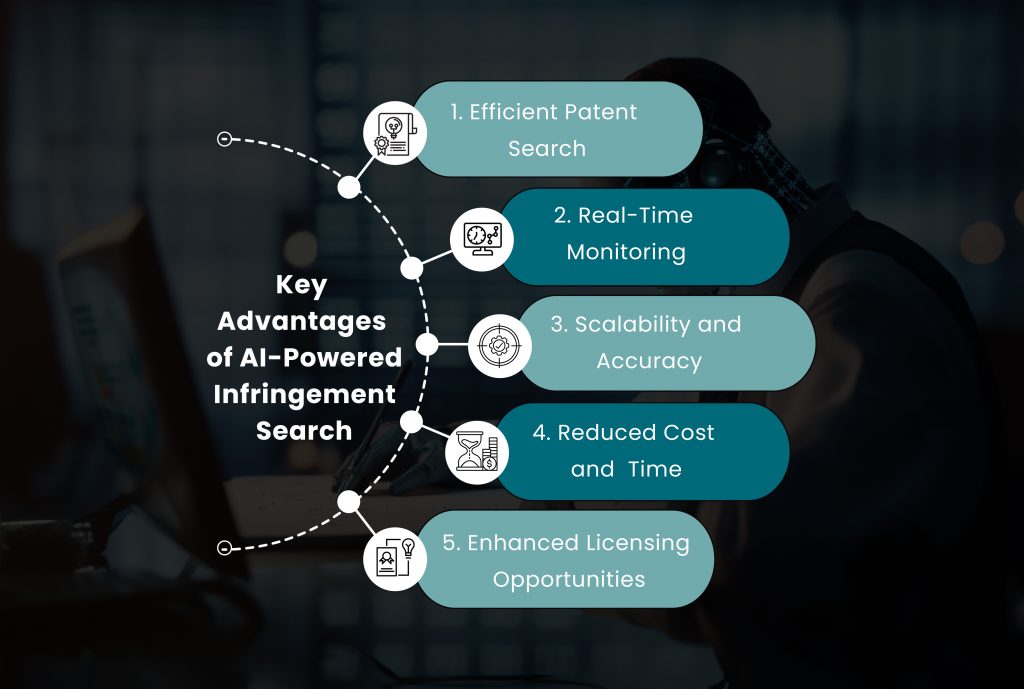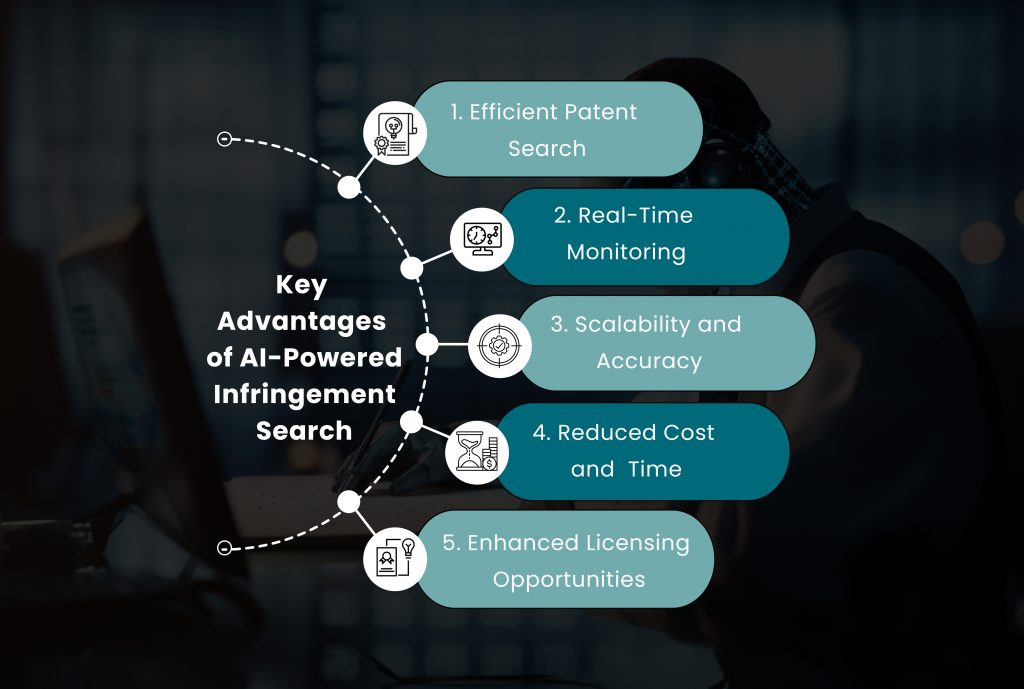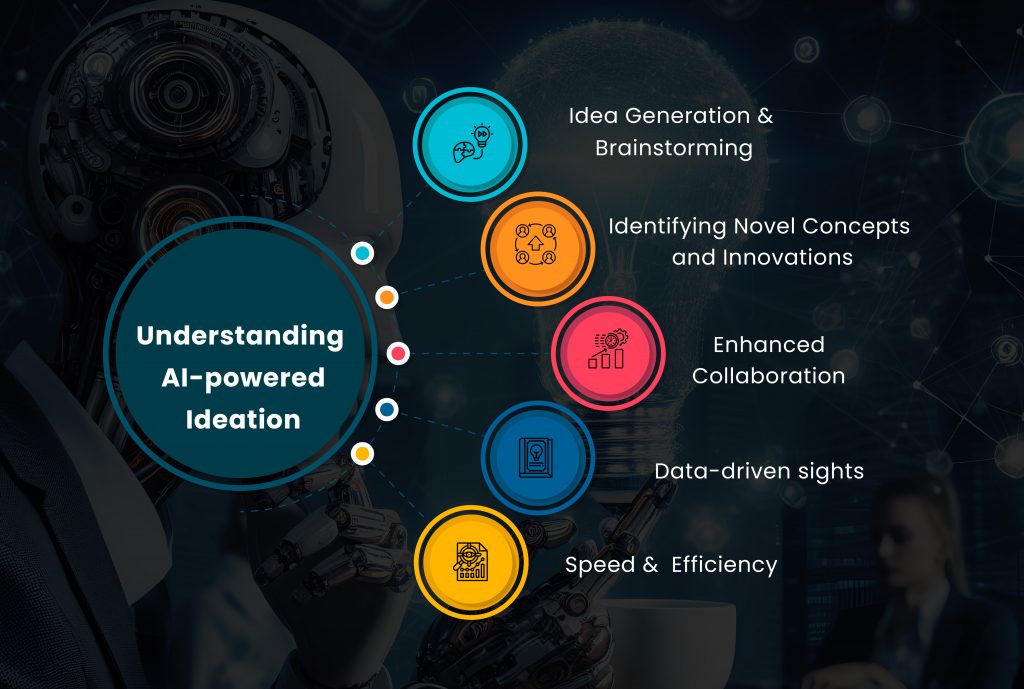
Innovation has always been at the heart of research and development (R&D), driving progress and transformation across industries. However, the landscape of R&D is undergoing a profound revolution—one that is powered by the incredible capabilities of Large Language Models and Generative AI. In this digital age, where data is abundant and information flows at unprecedented rates, these advanced AI technologies are changing the way we ideate, analyze, and create. Join us on a journey into the future of R&D as we explore how Large Language Models and Generative AI are not just tools but catalysts for innovation, pushing the boundaries of what’s possible and redefining the very essence of research and development.
Introduction to AI in R&D
Artificial Intelligence (AI) has become an undeniable driving force behind innovation and transformation across various industries. Its profound impact on Research and Development (R&D) processes is particularly noteworthy.
Historically, R&D has been a labor-intensive and time-consuming endeavor, requiring exhaustive data analysis, literature reviews, hypothesis testing, and creative ideation. While human intellect and ingenuity have been the backbone of this field, the sheer volume of data and information available today has made it increasingly challenging to extract meaningful insights and stay competitive. This is where AI steps in as a game-changer.
At its core, AI in R&D involves the application of machine learning, deep learning, and natural language processing techniques to automate and enhance various aspects of the research process. It empowers researchers and innovators to accomplish more in less time while making data-driven decisions.
One of the most prominent manifestations of AI in R&D is the utilization of Large Language Models. These models have demonstrated an unparalleled ability to understand, generate, and process human language. They can sift through vast repositories of textual data, extract relevant information, and even generate human-like text based on input prompts.
This newfound capability is revolutionizing how researchers approach literature reviews, patent searches, and information gathering. AI-driven systems can analyze mountains of research papers, patents, and documents in a fraction of the time it would take a human researcher. This not only accelerates the pace of R&D but also reduces the chances of overlooking critical information.
Moreover, AI’s potential in ideation and hypothesis generation is equally remarkable. Large Language Models can assist in brainstorming sessions, suggesting novel concepts and ideas based on a given topic. This opens up new avenues for creativity and innovation, enabling researchers to explore uncharted territories and make groundbreaking discoveries.
Data Analysis and Processing
In the realm of Research and Development (R&D), data reigns supreme. It serves as the lifeblood of innovation, providing the raw material from which insights are forged and discoveries are made. However, the sheer volume and complexity of data in today’s digital age have posed formidable challenges for researchers. This is where Artificial Intelligence (AI) steps in, revolutionizing the way data is analyzed and processed in R&D.
AI’s role in data analysis and processing is nothing short of transformative. Traditional methods of manually sifting through data tables, conducting statistical analyses, and drawing conclusions have been labor-intensive and time-consuming. With the advent of AI, these processes have been accelerated and enhanced exponentially.
At the forefront of AI-driven data analysis are machine learning algorithms. These algorithms can be trained to recognize patterns, make predictions, and uncover hidden insights within vast datasets. This capability is invaluable in R&D, where researchers often grapple with large volumes of complex data from experiments, simulations, and observations.
Furthermore, AI-driven data processing is not limited to structured data alone. Natural Language Processing (NLP) models, like Large Language Models, are proficient in handling unstructured data such as research papers, patents, and textual documents. These models can extract key information, summarize lengthy documents, and even generate human-like text based on input prompts.
In addition to speed and efficiency, AI also offers a degree of accuracy and consistency that is difficult to match through manual processes. It reduces the margin for human error, ensuring that critical insights are not overlooked during the analysis phase.
Patent Prosecution and Monetization with AI
Patent prosecution and monetization represent critical phases in the lifecycle of intellectual property (IP). Traditionally, these processes have been arduous, time-consuming, and laden with complexities. However, the advent of Artificial Intelligence (AI) is revolutionizing the way patents are managed, prosecuted, and monetized.
Patent Prosecution with AI
- Automated Prior Art Searches: One of the key components of patent prosecution is conducting thorough prior art searches. AI-powered tools can scan through an extensive database of patents and research papers, identifying relevant prior art quickly and accurately. This not only expedites the process but also reduces the chances of missing critical references.
- Enhanced Drafting Assistance: AI can assist patent attorneys in drafting patent applications. Natural Language Processing (NLP) models can generate technical descriptions and claims based on input data, making the drafting process more efficient and consistent.
- Examiner Insights: AI analytics can provide valuable insights into the behavior and tendencies of patent examiners. By analyzing historical data, AI can predict how examiners are likely to respond to specific claims or arguments, helping patent attorneys strategize their prosecution efforts.
Patent Monetization with AI
- Efficient Infringement Searches: AI-powered tools can streamline the process of searching for potential patent infringements. These tools can analyze vast datasets, identify potential infringing products or technologies and even generate claim charts and Evidence of Use (EoU) charts to support infringement claims.
- Market Analysis and Licensing Opportunities: AI can analyze market trends and competitive landscapes to identify potential licensing opportunities for your patents. By understanding market dynamics, you can make informed decisions about licensing your IP.
- Identifying Potential Licensees: AI can help match your IP portfolio with potential licensees by analyzing their technology portfolios and patent activities. This ensures that you target the right companies for licensing negotiations.
- Continuous Monitoring and Enforcement: AI can continuously monitor the market for potential infringements, ensuring that your IP rights are protected. Automated enforcement mechanisms can be put in place to take action against infringing parties.
- Maximizing ROI Through Licensing: AI can help optimize licensing deals, ensuring that you derive maximum value from your patents. It can also track and report on the financial performance of licensing agreements.
The integration of AI into patent prosecution and monetization processes is transforming these traditionally complex and time-consuming activities into streamlined, data-driven operations. By leveraging AI’s capabilities, organizations can not only enhance their IP management but also unlock new revenue streams through licensing and enforcement, making AI an invaluable tool in the world of patents.
AI-Powered Ideation: Unleashing Creativity with Artificial Intelligence
Innovation begins with a spark of creativity, and nowhere is this more evident than in the world of research and development (R&D). However, ideation can be a challenging and time-consuming process, often requiring exhaustive brainstorming sessions and the exploration of countless possibilities. This is where Artificial Intelligence (AI) comes into play, revolutionizing ideation by offering new avenues for creative exploration.
Understanding AI-Powered Ideation
AI-powered ideation is not about replacing human creativity but rather augmenting and enhancing it. AI systems, particularly those built upon Natural Language Processing (NLP) and machine learning algorithms, have the unique capability to analyze vast amounts of data, identify patterns, and generate creative suggestions.
1. Idea Generation and Brainstorming
AI can be a valuable partner in brainstorming sessions. By providing AI with a specific problem statement or topic, it can generate a multitude of ideas and concepts based on its analysis of extensive datasets. This not only accelerates the ideation process but also introduces novel perspectives that human participants might not have considered.
2. Identifying Novel Concepts and Innovations
AI can scan through an extensive range of sources, including research papers, patents, and historical data, to identify emerging trends and gaps in knowledge. It can suggest innovative concepts that align with your research objectives and market trends, helping researchers explore uncharted territories and seize untapped opportunities.
3. Enhanced Collaboration
AI-powered ideation tools can facilitate collaboration among multidisciplinary teams. By providing a common platform for idea sharing and development, these tools ensure that insights from various experts are effectively integrated into the ideation process.
4. Data-Driven Insights
AI can analyze market data, consumer behavior, and industry trends to provide data-backed insights that can inform the ideation process. These insights can help refine ideas and tailor them to meet specific market needs and demands.
5. Speed and Efficiency
Ideation with AI is not limited by the constraints of time and fatigue. AI systems can generate ideas 24/7, allowing organizations to maintain a constant flow of creative concepts without the limitations of human schedules.
Drafting Assistance with AI: Enhancing Precision & Efficiency
The process of drafting a patent application is a meticulous endeavor that demands precision, technical expertise, and a keen understanding of intellectual property laws. Any shortcomings in the patent drafting phase can have significant consequences, including the potential loss of valuable intellectual property. To alleviate the challenges and enhance the efficiency of patent drafting, Artificial Intelligence (AI) is now playing a pivotal role.
Understanding AI-Powered Patent Drafting

AI-powered patent drafting is about augmenting human capabilities, not replacing them. It involves the utilization of advanced AI technologies, such as Natural Language Processing (NLP) and machine learning algorithms, to assist patent attorneys and inventors in the creation of high-quality patent applications.
1. Accelerating the Drafting Process
One of the most notable advantages of AI in patent drafting is its ability to expedite the process. AI-powered tools can analyze existing patents, technical documents, and prior art databases to generate initial drafts, saving substantial time that would otherwise be spent on manual research and document creation.
2. Generating Technical Descriptions
AI systems can comprehend complex technical concepts and generate detailed descriptions of inventions. This includes not only accurately articulating the functionality of an innovation but also ensuring that the patent application aligns with the specific language and requirements of patent offices.
3. Assisting with Claims Generation
The claims section of a patent application is crucial, as it defines the scope of protection. AI can suggest potential claims by analyzing the invention’s technical specifications and comparing them to existing patents. This assists patent attorneys in formulating robust claims that maximize protection.
4. Real-Time Iterative Enhancements with AI Chatbot
AI chatbots can be employed during the drafting process, offering real-time iterative enhancements. These chatbots can engage with patent attorneys and inventors, providing instant feedback and suggestions for improving the patent application as it is being developed. This dynamic interaction ensures that the application is continually refined and optimized for quality and comprehensiveness.
5. Ensuring Consistency
AI-powered drafting tools promote consistency in patent applications. They maintain uniform terminology, style, and format throughout the document, reducing the risk of inconsistencies that can weaken the application’s legal standing.
AI-Powered Infringement Search
Protecting intellectual property is a paramount concern for innovators and organizations. Central to this endeavor is the ability to identify potential patent infringements swiftly and effectively. This is where Artificial Intelligence (AI) has emerged as a game-changer. AI-powered infringement search is transforming the way patent holders safeguard their intellectual property rights, offering a level of efficiency and accuracy that was previously unattainable.
Understanding AI-Powered Infringement Search
Infringement searches involve scouring vast datasets, including patents, technical documents, and product descriptions, to identify instances where a product or technology may be infringing on an existing patent. Traditionally, this process was labor-intensive and required extensive human expertise. AI, however, brings a new level of automation and precision to this critical task.
Key Advantages of AI-Powered Infringement Search

1. Efficient Patent Search
AI excels at processing and analyzing large volumes of data rapidly. It can efficiently scan through patent databases and identify potential matches or infringements. This accelerates the search process, allowing patent holders to take swift action when needed.
2. Real-Time Monitoring
AI-powered infringement search can be an ongoing process, continuously monitoring the market and detecting potential infringements as they emerge. This proactive approach ensures that patent holders stay ahead of potential disputes.
3. Scalability and Accuracy
AI’s scalability allows it to handle searches across a vast array of patents and products with high accuracy. It minimizes the likelihood of false positives while ensuring that no potential infringements go unnoticed.
4. Reduced Cost and Time
AI-driven infringement search reduces the time and resources required for manual searches. It allows patent professionals to focus their efforts on critical analysis and decision-making rather than laborious data sifting.
5. Enhanced Licensing Opportunities
AI-powered infringement search not only helps in identifying infringements but also creates opportunities for licensing negotiations. Patent holders can approach potential infringers with evidence-backed claims, facilitating mutually beneficial agreements.
Generating Claim Charts/ EoU (Evidence of Use) Charts
Claim charts and Evidence of Use (EoU) charts are essential tools in the world of intellectual property (IP) enforcement. They provide a clear and visual representation of how specific patent claims are potentially being infringed by a product or technology. Traditionally, the creation of these charts has been a time-consuming and resource-intensive process. However, the advent of Artificial Intelligence (AI) is revolutionizing this aspect of IP protection, making it more efficient and accurate than ever before.
Understanding Claim Charts and EoU Charts
Claim charts and EoU charts serve as crucial documentation in patent litigation and licensing negotiations. They illustrate how a particular patent’s claims correspond to elements or features of a potentially infringing product or technology. These charts are instrumental in establishing the basis for infringement claims and providing evidence of patent violations.
Key Advantages of AI-Powered Chart Generation

1. Rapid and Accurate Analysis
AI systems, particularly those leveraging Natural Language Processing (NLP) and computer vision, excel at processing large volumes of textual and visual data. They can quickly and accurately analyze patent claims alongside product specifications and documentation to identify potential matches and infringements.
2. Reduced Resource Requirements
AI reduces the human resource requirements for generating claim charts and EoU charts. It minimizes the need for manual data extraction and analysis, freeing up IP professionals to focus on strategic decision-making.
3. Consistency and Standardization
AI ensures consistency and standardization in chart generation. It adheres to predefined rules and formats, reducing the risk of errors or inconsistencies that might occur in manually generated charts.
4. Enhanced Negotiations and Litigation
Claim charts and EoU charts generated with AI provide a robust foundation for licensing negotiations and patent litigation. They offer evidence-backed claims, making it easier to demonstrate the validity of infringement allegations.
5. Cost-Effective Enforcement
By streamlining the chart generation process, AI contributes to cost-effective IP enforcement. It minimizes the time and effort required to build a case, making it financially viable for organizations of all sizes.
The Future of R&D with AI
As we journey through the transformative landscape of Research and Development (R&D) powered by Artificial Intelligence (AI), it becomes abundantly clear that we are standing on the cusp of a new era of innovation. The synergy between AI technologies, such as Large Language Models and machine learning algorithms, and the intricate world of R&D is not just a technological convergence; it’s a paradigm shift that promises to redefine how we innovate, protect intellectual property, and drive progress across industries.
The key takeaways from our exploration of the future of R&D with AI are profound and promising:
1. Accelerated Innovation
AI expedites the R&D process by automating tasks, offering data-driven insights, and enhancing ideation. Researchers can iterate on ideas more rapidly, test hypotheses with greater precision, and ultimately innovate at a pace previously unimaginable.
2. Enhanced Precision and Efficiency
AI’s role in data analysis, patent drafting, and claim chart generation elevates the precision and efficiency of these critical R&D activities. This not only reduces the likelihood of errors but also optimizes the allocation of resources.
3. Intellectual Property Protection and Monetization
AI revolutionizes how intellectual property is protected and monetized. From automated infringement searches to generating claim charts and identifying potential licensees, AI tools empower organizations to safeguard their IP and derive value from it with unparalleled efficiency.
4. Augmented Creativity
AI-powered ideation tools act as creative catalysts, assisting researchers in generating novel concepts and exploring uncharted territories. AI becomes a partner in ideation, augmenting human creativity and expanding the horizons of innovation.
5. Strategic Decision-Making
AI provides data-driven insights for patent strategy, licensing opportunities, and market analysis. This enables organizations to make informed decisions that align with their business objectives and maximize the value of their intellectual property.
6. Real-Time Monitoring and Adaptation
AI’s ability to provide real-time insights and continuous monitoring ensures that organizations can adapt swiftly to changes in the R&D landscape, market dynamics, and potential infringements.
7. Collaboration and Efficiency
AI facilitates collaboration among multidisciplinary teams, bridging the gap between technical expertise and AI capabilities. This synergy enhances efficiency and promotes a culture of innovation.
8. Cost-Effective Innovation
AI streamlines processes, reducing resource requirements and costs associated with R&D, patent protection, and IP monetization. It makes innovation and IP management financially viable for organizations of all sizes.
The future of R&D with AI is marked by a continuous quest for innovation, fueled by the limitless potential of AI technologies. It is a future where the boundaries of what’s possible are continually pushed, where intellectual property is safeguarded with unprecedented precision, and where collaboration and creativity flourish. As AI continues to evolve and integrate further into the R&D landscape, it promises to be a catalyst for innovation, propelling us toward a future defined by progress and transformative breakthroughs. Welcome to the future of R&D—a future where AI is not just a tool but a driving force behind innovation.


